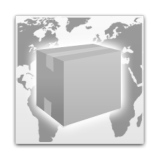Sintai Aggregation & Distribution System offers 32*100G Aggregation and Distribution system(ST32C) and 48*10G +6*100G Aggregation and Distribution system(ST-X48C6) which has the characteristics of high port density, rich working mode, flexible high-performance deployment, convenient management and maintenance, and can adapt to a variety of application environments. It can provide real-time network communication data for network information monitoring, network business analyzer, signaling analyzer, and other equipment as required.
Types of Data Aggregation and Distribution System
32*100G Aggregation and Distribution
ST32C is a new type of high-density 100G Ethernet aggregating and distributing equipment, which has the characteristics of high port density, rich working mode, flexible high-performance deployment, convenient management and maintenance, and can adapt to a variety of application environments.
48*10G +6*100G Aggregation and Distribution
ST-X48C6 is a new type of 40G / 100G Ethernet aggregating and distributing equipment, which has the characteristics of high port density, rich working mode, flexible high-performance deployment, convenient management and maintenance, and can adapt to a variety of application environments.
Aggregation and Distribution System Advantages
01
Complete solution capability
Full range of solutions with GE/10GE/40GE/100GE Ethernet signals and 2.5G/10G/40G POS signals
02
Rich application scenarios
Mobile core network data collection, IDC/ISP information security high-speed link data processing and other rich application scenarios
03
Stable use of equipment
It has been widely used in domestic operators, security providers, integrators, government enterprises and other customers, good and stable operation
04
Operation and maintenance convenient
Provide unified BS network management, support overflow pre-alarm, historical performance query, easy operation and maintenance
Aggregation and Distribution System FAQs
What is data aggregation in supply chain?
Aggregation refers to a function using which given data at a detail level is aggregated to a higher level. For example, forecast at a product level or product-customer level is aggregated to a product family or product family-country level.
What is aggregation in data warehouse?
High-density 100G Ethernet aggregating and distributing equipment, which has the characteristics of high port density, rich working mode, flexible high performance deployment, convenient management and maintenance, and can adapt to a variety of application environments.provides powerful intelligent flow selection and multi-channel monitoring functions, supports multiport data marking, aggregation, filtering, multiple copies of data packets or load balancing and distribution output, especially suitable for complex application environment with large number of links, large network traffic and high density.
What is Data Aggregation and Data Distribution?
Data aggregation is any process whereby data is gathered and expressed in a summary form. When data is aggregated, atomic data rows -- typically gathered from multiple sources -- are replaced with totals or summary statistics.
Data aggregation is often used to provide statistical analysis for groups of people and to create useful summary data for business analysis. Aggregation is often done on a large scale, through software tools known as data aggregators. Data aggregators typically include features for collecting, processing and presenting aggregate data.
Data aggregation can enable analysts to access and examine large amounts of data in a reasonable time frame. A row of aggregate data can represent hundreds, thousands or even more atomic data records. When the data is aggregated, it can be queried quickly instead of requiring all of the processing cycles to access each underlying atomic data row and aggregate it in real time when it is queried or accessed.
Data aggregators work by combining atomic data from multiple sources, processing the data for new insights and presenting the aggregate data in a summary view. Furthermore, data aggregators usually provide the ability to track data lineage and can trace back to the underlying atomic data that was aggregated.
Data distribution is presentation. Users can present the aggregated data in a summarized format that itself provides new data. The statistical results are comprehensive and high quality.
Application of Data Aggregation and Distribution
Data aggregation is often used to provide statistical analysis for groups of people and to create useful summary data for business analysis. Aggregation is often done on a large scale, through software tools known as data aggregators.
Companies often collect data on their online customers and website visitors. The aggregate data would include statistics on customer demographic and behavior metrics, such as average age or number of transactions. This aggregated data can be used by the marketing team to personalize messaging, offers, and more in the user's digital experience with the brand.
Finance and investment firms are increasingly basing their recommendations on alternative data. A large portion of that data comes from the news, since investors need to stay up-to-date on industry and company financial trends. So, financial firms can use data aggregation to gather headlines and article copy and use that data for predictive analytics, to find trends, events, and shifting views that could affect the finances of the companies and products they are tracking.
Data aggregation can be used for a wide range of purposes in the travel industry. These include competitive price monitoring, competitor research, gaining market intelligence, customer sentiment analysis, and capturing images and descriptions for the services on their online travel sites.
Collecting high-quality, reliable data and a sufficient enough quantity to deliver consistent findings is important. For anything from financial or business planning decisions to pricing, product, marketing and services campaigns, data aggregation is useful.
As a professional qsfp transceiver supplier, we provide china optical amplifier, dwdm transponder, data aggregation software, optical protection switch and etc. For more information, please feel free to contact us!
Localisation : 3-4F, Office Building, No.2 Fangda Road (New Economic Industry Park), Yunpu Industrial Zone, Huangpu District, Guangzhou, 510530 Guangzhou,
Personne à contacter : Yao Jofines , 86 020 82037001






